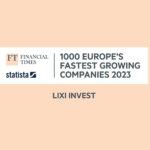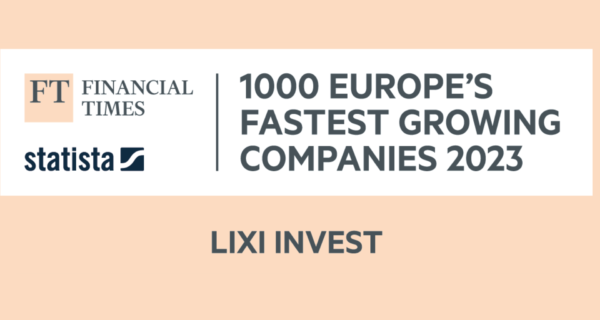In this article, we delve into all the bogus real estate investment myths. Some of the risks discussed are unique to the Italian market, since real estate is one of the greatest passions among Italian people (so much so that the motto “bricks never let you down” is all the rage). Still, many observations may also come in handy for people not living in Italy.

Now, it will stand you in good stead to know that, when it comes to investing in real estate, we can in fact refer to three major case categories.
All of them being significantly different and resulting in different considerations.
Folks looking to sell you anything that is real estate-related are in the dark about this very important difference.
As a result, they are prone to moving the goalposts, so as to throw you off your game.
Let’s get a few things straight.
These three major real estate-related case categories are:
- Primary residence, main home
- Real estate speculation
- Passive income from real estate
Lumping together what applies to primary residences with what applies to real estate speculation or passive income is a colossal mistake.
And, I’ll say it again, that betrays a total lack of critical thinking and industry awareness.
Primary residence, i.e. main home
I said earlier that I wanted to keep this analysis as rational as possible.
As such, I can tell you, right off the bat, that the big “Sophie’s choice” decision between buying a house to live in and going the renting route has NOTHING to do with investing.
Your main home, the one you live in, is not an investment.
And the decision between buying and renting is NOT just an economic and financially motivated choice, but rather it is a choice driven by an EMOTIONAL component.

Yearning to have a solid roof over our head, a recognizable, familiar place, filled with our things, our routines, in which we can “feel right at home,” which makes us feel safe, which makes our family feel safe, is a desire that has been inherent in all of us for thousands of years.
Regardless of the fact that I personally don’t see how a rented roof could be less safe than a paid-for one, an additional desire/need comes into play here.
The desire for ownership.
To some of us, to many of us, it feels even safer and more secure to own what we use. Be it a house, a car, or whatever.
I am not one to object to that either, because, I’ll say it again, these are desires inherent in all of us as human beings.
They may very well be more developed in some of us, in turn translating into a full-blown disorder that escalates into an over-the-top sacrifice to buy four bricks, but we are all built like that, one way or another.
So, again, since a main home is not an investment, nor is it an asset you can build a passive income around (unless you have your house overflowing with roommates, or stuff along those lines), any cost-effectiveness analysis may turn out to be an exercise in futility.
If buying your main home makes you feel good, increases your level of financial peace of mind, allows you to take a bunch of bigger risks in other areas of life, it’s not my place to tell you it’s the wrong thing to do.
But I do want to give you a quick heads up about how that dream of becoming a new homeowner could turn into a nightmare.
There are some factors you should be paying attention to. Here they are.

Impact of purchasing this house on your combined net worth
If you have €200,000 saved up, and you part with €180,000 to buy your main home, I feel compelled to tell you that there is no balance in that.

Mortgage impact on the total amount paid to buy the house
If, when buying a house, you are forced to take out a mortgage loan for 70-80-100% of the list price you pay, I once again feel compelled to tell you that there is no balance in that.

Impact of mortgage repayment term
If, when buying a house, you are forced to stretch out your mortgage repayment term to 20-25-30 years, so as to be able to keep up with it, I feel compelled to tell you that there is no balance in that.
If you get a mortgage at 35, you will have paid it off when you hit 65.

Impact of mortgage payment on your personal monthly budget
If, when buying a house, you are forced to get on a payment plan that gobbles up 35-40% or even more of your total income, I feel compelled to tell you that there is no balance in that.
For anyone not falling into any of these case categories, because they do not need a mortgage to buy a house, and because their main home would represent a fraction of their net worth, buying a house to live in may very well be the way to go.
For folks falling instead into these case categories, simply put, buying a house with a sizeable mortgage increases their overall financial risk level.

Real estate speculation
Let’s now move on to talk about “properties other than your main home.”
Before we get to discuss real estate speculation, and eventually passive income from real estate, it’s essential we go over an important topic.
When you invest in something (be it a stock, bond, property, gold, or other things), money can be made in one of two ways:
– Thanks to a positive variation in the PRICE of our investment
I buy a property for €150,000, then flip it for €200,000
I buy €50,000 worth of shares, then sell them for €70,000
I buy €10,000 worth of gold, then sell it for €15,000
This is called “capital gain.”
– Thanks to a recurring cash flow resulting from our investment.
I buy a property, I rent it out, and I collect €700 gross per month.
I pick up some shares, or an equity ETF, and pocket €15,000 a year in dividends.
I buy some bonds, or a bond ETF, and pocket €15,000 a year in coupons.
So, there lies the difference between something that is able to generate a passive income for us (rental property, stock, bond), and something that is unable to do so. Gold, for one.
And so is real estate speculation.
By real estate speculation, we refer to buying a property, naturally trying to buy it for the lowest possible price, and then reselling it, naturally trying to sell it for the highest possible price.
Buy low, sell high, basically.
Well, having a go at buying low and selling high in order to net a profit (capital gain) is the exact definition of SPECULATION.
As I have been saying for years, there is nothing wrong with that.
The important thing is for you to understand what we’re talking about.
Real estate speculation, perhaps looking to buy through judicial auctions, or speculating around other difficult situations, is not something that can generate a PASSIVE INCOME.
Which is what we have been discussing in this video series.
It can, at most, generate an INCOME, and this, however, hinges on your JOB.
That is, after all, a fully-fledged mini-business.
One that entails market know-how, awareness of regulations and laws, knowledge of surrounding areas, commercial negotiation expertise, understanding of a number of supply chain actors (realtors, notaries, architects or surveyors, construction companies, craftsmen, etc.)
I totally get it, that for years it has been peddled to you as a piece of cake, pulling off that kind of stunt, buying houses on the cheap and selling them for big money, but that’s not how the story goes at all.
But even if it were as simple and quick as you have been told, it would still not be an INVESTMENT, let alone a PASSIVE INCOME INVESTMENT.
So, if you have the right amount of capital on hand, if you like a market, if you have done your due diligence and want to try your hand in the real estate selling game, once again, I would not be objecting to this at all.
It is simply my solemn duty to remind you that we are not talking about investments, but rather about real estate speculation, and that should be classified as a mini-business, whose operational success (no safe bet and a risk, of course) relies on your work, attention, and skill set, too.

Passive income from real estate
When it comes to this, we are actually referring to properties you own, which should be classified as assets you can create a revenue stream around.
I am in fact referring to rental properties, rented out for “passive income.”
The uninitiated would say, “rented out for income,” but this is a misnomer.
They are called “rental properties.”
This is the only form of REAL ESTATE INVESTMENT.
Not your main home, not real estate speculation, but an investment property aimed at earning a passive income.
So, how can one assess if the passive income gained from said property is the right one, if it is consistent with the level of risk taken, and what other unknown factors may be involved that are being overlooked?
Figuring out the passive income from a property is certainly not as straightforward as estimating the passive income from a stock investment (in part because, in that case, there is no number crunching involved, but it’s a figure that is automatically disclosed by your bank or platform), but that’s not impossible.
And there’s the rub.
If I go and ask the owner of a rental property what their passive income is, I’m pretty sure the answer will be:
- Beats me
- About 10% (or some other random, high number)
As such, the first stage in the analysis needs to have its roots in figuring out exactly what the passive income rate from your rental property/properties is.
Otherwise we are really just grasping at straws.
I would like to put on the table a rational and clean-cut analysis, while you are hellbent on pushing forward with your grandfather’s ideology that bricks never let you down and are always the best investment solution, and we won’t be getting past this impasse here.
So, to estimate this passive income, as precisely as possible, I have attached a simple spreadsheet, with which you will be able, with just some effort and attention on your part, but without going bananas, to estimate the net passive income from your properties.
Here’s a quick sneak peek for you.
To do this, we need to get our hands on four datasets.
Fixed assets, meaning the fair market value of your property.
Market price, in the event you set out to monetize it the next day, liquidating it so as to turn it into cold hard cash.
There are ways to come up with estimates, you may want to hit up a professional (provided there is no conflict of interest, which means no realtor who will have you believe that your home may be worth double what it’s actually worth just so they can score the listing).
– The gross annual passive income, which means the amount of money that the tenant pays you in rent over a one-year period.
– Taxes, which should be estimated both in terms of property-related obligations (IUC, IMU, TASI, TARI), and of taxes on passive income (the so-called dry coupon scheme, basically)
– Ordinary or extraordinary costs and expenses incurred for keeping your rental property orderly and in an ideal condition, as well as for making the property livable and rentable for the best possible price
It goes without saying that once you subtract taxes and costs from the gross passive income, you get the net passive income.
This net passive income should be considered in relation to the capital you invested, and that’s how you get the percentage amount of your annual passive income!
This is not rocket science, but, I can’t stress this enough, I am pretty positive that many rental property owners have no clue what this number is.
So, on the heels of this number crunching, a clear-cut, objective and rational set of information comes to light, which should then be reviewed.
Broadly speaking, the pointers I can give to you, in the context of the current market situation, are the following:
- A net passive income below the 2% threshold is hardly worth it. Lots of risk-taking involved and, above all, terrible returns.
- A passive income between 2% and 5% should be weighed up against other factors.
- A passive income above the 5% threshold is regarded as par for the course, provided it does not involve excessive risk-taking.
So, let’s talk a little bit about the RISKS associated with investing in real estate.
I think it has by now dawned on you that the saying “bricks are a safe bet” is total hogwash, also because, in the previous video, I went on and on about how there is no such thing as a safe-bet investment.
And that it is pointless and delusional to search for one.
The problem with the risks associated with real estate investing is that they are less conspicuous than the “risk-taking” involved in other forms of investment, such as stocks.
I mean, the fact that a stock or an ETF can fluctuate in price, hence going down and briefly slipping into negative territory, is as clear as day.
But this is as clear as day to everyone simply because financial markets are way more transparent.
You can, at any time, browse through your security deposit account, or a newspaper page, and see in real time what your investment counter-value is and which way it is trending.
And that’s not an estimate, such as what your average real estate agent is likely to churn out for you.
It’s an exact figure, because, if you wanted to, you could physically click through to sell, selling at that very price.
But we will be going over that next, as we get to discuss ETFs (exchange traded funds) and financial investments.
Let’s go back to the risks inherent in real estate investing.
Let me rattle off a few for you:

1. INSOLVENCY RISK
It’s the most reasonable out of all of them.
That’s simply the risk that the person you have rented out the house to (or commercial space, perhaps a handicraft business) will run into economic difficulties that may cause them to pay late or miss payments altogether.
When it comes to this, laws in Italy are no help at all, because eviction procedures take a very long time and are complex, especially when tenants have a family (on account of child welfare concerns).
The insolvency rate has been steadily increasing due to all the economic difficulties over the past few years, which have mainly affected the middle and lower-middle class.

2. CONCENTRATION RISK
In this case, we are referring to the risk that results from being unable to successfully achieve any sort of diversification.
Let’s take a look at the average investor and saver, potentially having one, two, or three real estate investments in full swing.
The problem is that a single real estate investment cannot be diversified.
Basically, by opting to put €100-200-300-500,000 in a single real estate basket, you are not “investing in real estate.”
You are investing in ONE PROPERTY:
- Which you buy from ONE SELLER
- In ONE city and ONE neighborhood
- Having UNIQUE interior design features
- Which you rent out to ONE TENANT
All of these are unreasonable concentration risks, where just a single variable going awry may be enough to send the passive income from a key portion of your net worth belly up.
There is no geographical diversification in place, nor is there any credit diversification.

3. NEGATIVE PASSIVE INCOME RISK
in this case, we are referring to the risk of getting a negative passive income.
“But how is it even possible to get negative passive income from real estate? Come on, get outta here!”
Still, there are actually two ways you may end up getting a negative passive income.
The first one is when you have a tenantless property, meaning not rented out, sitting vacant.
It’s a huge mistake to look at it as zero passive income, as it’s a property that “I do have sitting there, you never know.”
With no real estate inflow (rent), the passive income is DEFINITELY bound to slip into negative territory due to taxes and maintenance costs.
Which you are required to pay by law, unless you are okay with the property being foreclosed on or falling apart after a few years of neglect.
But this also applies to properties being rented out for small amounts (€400-600 per month).
An annual passive income of €5-6-7,000 could easily shrink down to zero.
All it takes is renovation work on one side of the exterior, furniture remodelling (or are you one of those who rents out condos featuring furniture from the ’70s that belonged to a grandfather, and then you sing the blues?), or appliances going on the fritz to wipe out or shrink this passive income down to zero, or below zero.

4. TAX RISK
Not much to explain here.
Real estate is State Governments’ ATM, and given its huge popularity in Italy (the country host to the highest number of property owners in the world, and where wealth is dramatically skewed in favor of real estate), the State Government knows full well that it will be laughing all the way to the bank by simply (yet on a regular basis) jacking up the real estate tax burden.
I am not so much referring to the risk of a tax increase on passive income happening (dry coupon), but to a rise in property taxes.
You can definitely see how, when it comes to properties with a high cadastral income, an increase of a few percentage points would entail paying several thousand euros extra every year.
Along with the associated risk of negative or somehow very low passive income.

5. DEMOGRAPHIC RISK
This is a bona fide social trend.
Somewhat more vague, yet real and potentially explosive nonetheless.
I am in fact talking about the risk associated with the aging population trend holding steady, as well as, above all, with the trend in depopulation of some geographical areas marching on.
With young working-age people being hard to come by, who are traditionally the ones making up the bulk of the demand in the rental housing market, finding a tenant might prove to be a tall order.
I am not just referring to finding one per se, but to finding one who meets our requirements.
I mean, countries in regions that are not quite financially thriving may be coming to mind.
You know, I may be thinking about the mid-Sardinia area, since I am Sardinian.
If, as it has been the case for years now, all the youngsters move abroad to study, and they put down roots there, who are you going to rent out your beautiful condo to?
Broadly speaking, picking a tenant boils down to people who stayed behind, who are most likely to be working low-paying jobs, or have landed there because they were probably fleeing even more financially strained countries.
In the short term, that may not strike us as a risk, but it could prove to be a huge risk over the years.
Which, of course, has repercussions not only in terms of challenges posed to passive income generation, but also in terms of a likely slump in the overall value of the property.

6. LIQUIDITY RISK
As I have explained above, any investment has two sources of return:
- Invested capital growth
- Passive income from invested capital
Now, although we are a bunch of for-profit investors here, meaning we are keen on building a passive income from capital… we obviously can’t forget that capital protection is extremely important.
With no capital, or with a small capital, then it’s bye bye passive income.
By liquidity risk, I am now referring to the risk of not being able to convert your real estate investment into liquidity (cash), within a reasonable timeframe and at reasonable prices.
As such, we are talking about risk-taking that has an impact on your intended invested capital growth.
You can definitely see how finding a buyer for your property, one agreeing to hand over hundreds and hundreds of thousands of euros, is somehow NEVER as easy as clicking SELL via your online banking platform in order to sell your financial investments.
Of course, the more the property you are trying to sell is totally being priced out of the market, the greater is the liquidity risk, and it gets swayed by poor judgement and cognitive distortions, such as:
- Endowment effect: on account of it being a property, you are led to believe that it is worth more than other properties with similar features, just because you are the owner.
- Anchoring effect: you get mentally hung up on a price, the one that you, or someone on your behalf (possibly a relative or realtor), have burned into your head, and you are finding it hard to move past that.
The truth is that, when it comes to markets, there is no such thing as a “fair” price.
The only price that matters is the one that the market (in this case amounting to ONE PERSON, hence circling back to the concentration risk described above) is prepared to pay to you to buy your property.
All the rest is just empty talk.
So, having ridden our analysis of the two real estate topics we couldn’t care less about from a passive income perspective (i.e. those about main homes and real estate speculation), I have described to you what the six risks are that you need to take into account.
While also assessing whether a 1%, 2%, or 3% return, which you put your finger on earlier and estimated through our file, will bring enough of a payoff to justify the risk-taking involved.
Generally speaking, it is my duty to tell you that a real estate investment with sustainable passive income and consistent with a good overall planning strategy, which is what I am an expert in, should have the following characteristics:
- Every single one of the properties you are renting out should never put excessive burden on your combined net worth
- All of your real estate assets should never tie up too much of your combined net worth
- It should never be located in a financially strained area, or with very little potential for development
- It should never serve up a mediocre passive income, because, as we have seen earlier, the risk of slipping into negative territory is high, and some of the costs incurred are fixed (e.g., a plumbing job sets you back the same amount, regardless of it going down in a property rented out for €500 or €2,000 per month)
If you are unable to meet these conditions, you should consider other forms of passive income investment.










